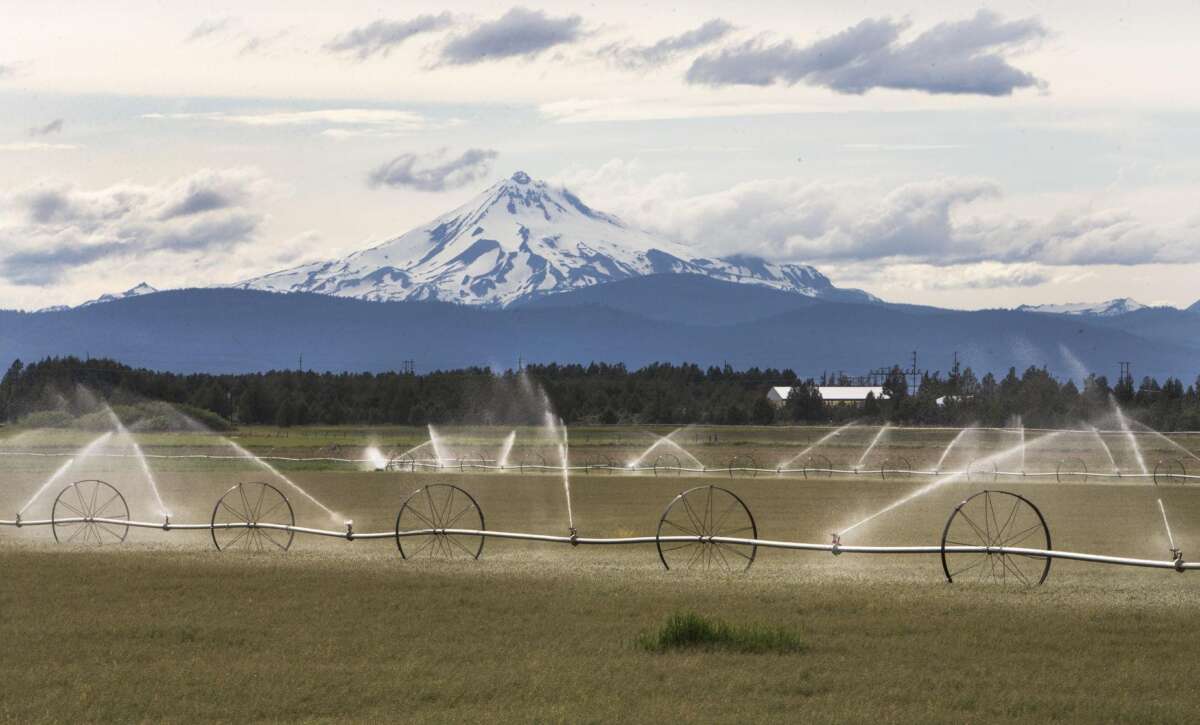This article was published on: 01/17/23 2:38 PM
A long-awaited modernization project in the North Unit Irrigation District received approval last week from federal regulators, a positive step for district patrons who have faced multiple years of water shortages.
The project will convert 27.5 miles of open ditches in Jefferson County to pipeline, according to an Environmental Assessment released by the Natural Resources Conservation Service in Oregon. Some of the funds will also be used to construct four small ponds at the end of the pipeline for draining purposes and winterization.
The conservation service determined that the project will not cause “significant local, regional, or national impacts to the environment,” according to a press statement. The project is now available for federal funding and can move forward into final design and construction.
Farmers in North Unit have been hard hit by four years of drought that has emptied reservoirs and forced irrigation districts to cut their allotments to farmers. Last year, North Unit farmers were only delivered 0.5 acre-foot of water, a fraction of the 2-acre feet they receive in years without drought. Without adequate water allotments farmers can only grow crops on a portion of their land, leaving large areas empty and at risk of topsoil loss.
The main benefits touted by the irrigation district are water conservation and a reduction of the district’s operating and maintenance costs. The project will also improve water quality in the Crooked River and Lake Billy Chinook by reducing operational spills, which occur when the district is priming the system.
“No water from our system will be returned to natural waterways. All the water will be kept within our confines,” said Josh Bailey, general manager for North Unit Irrigation District.
The project will occur in two groups over six years. The first ditch to be piped starts at Haystack Reservoir and heads northeast before terminating just north of Culver. Up to 153 patrons will receive pressurized water from the project, reducing or eliminating the need to run pumps to pressurize water for their sprinklers.
“Every patron will benefit because of the conserved water,” said Bailey. “The patrons that are adjacent to this pipeline, those guys will benefit hugely because of the pressurized water. They can eliminate or reduce their electric pumping fees for their irrigation equipment.”
The total cost of the project is $37.5 million, according to the environmental assessment, with $28.5 million funded by the Natural Resources Conservation Service, through its Watershed Protection and Flood Prevention Act.
The remaining $8.9 million is paid by North Unit, the Deschutes Basin Board of Control, and other nonfederal funding sources.
Piping the open ditches is expected to conserve 6,089 acre-feet of water annually. An acre-foot of water is the amount that can cover 1 acre of ground in 1 foot of water.
Of that savings, 4,567 acre-feet will be used to boost water supplies for farmers. The remaining 1,522 acre-feet will be released into the Deschutes River during the non-irrigation season to improve aquatic habitat for wildlife, including the Oregon spotted frog.
Kate Fitzpatrick, executive director of the Deschutes River Conservancy, an environmental non-profit, says if this volume of water were released at a steady rate between Nov. 1 and March 31 it would restore approximately 5.2 cubic feet per second to the Upper Deschutes River.
“This is progress towards the flow restoration needs, specifically the 300 cfs release that is targeted for 2028,” said Fitzpatrick. “It may be released at a higher rate for shorter periods if natural resource agencies deem it more beneficial to species for habitat needs.”
-Michael Kohn




